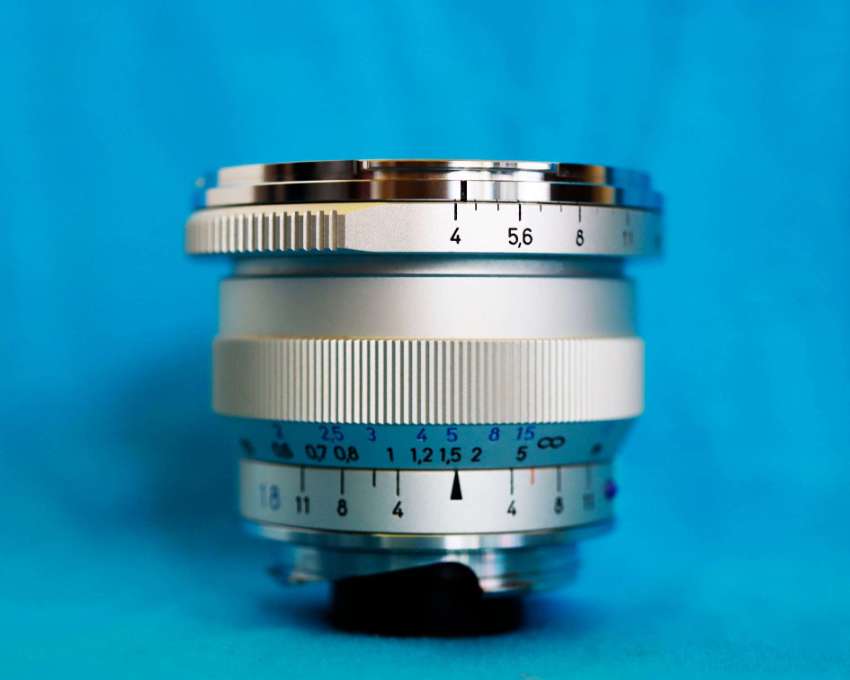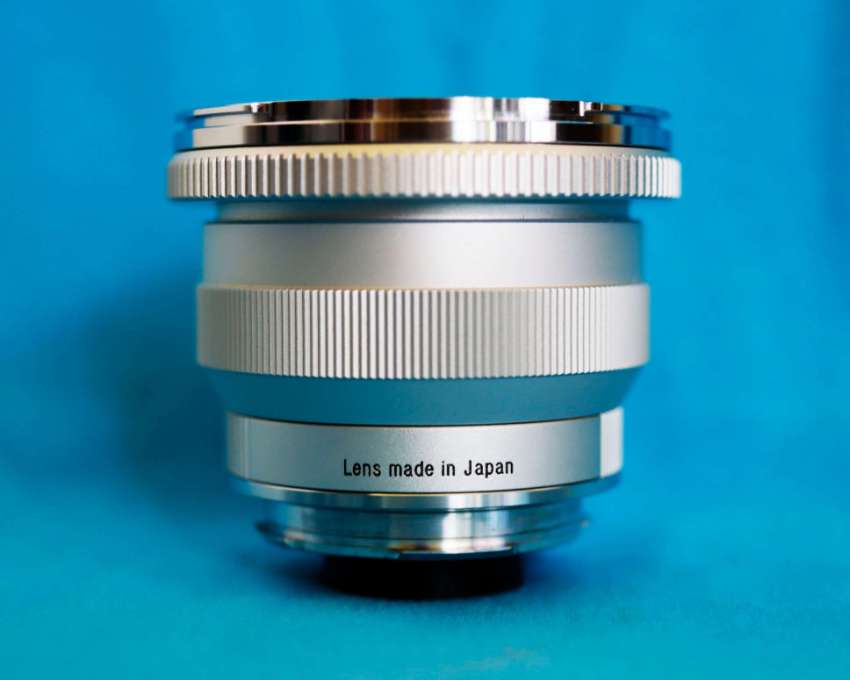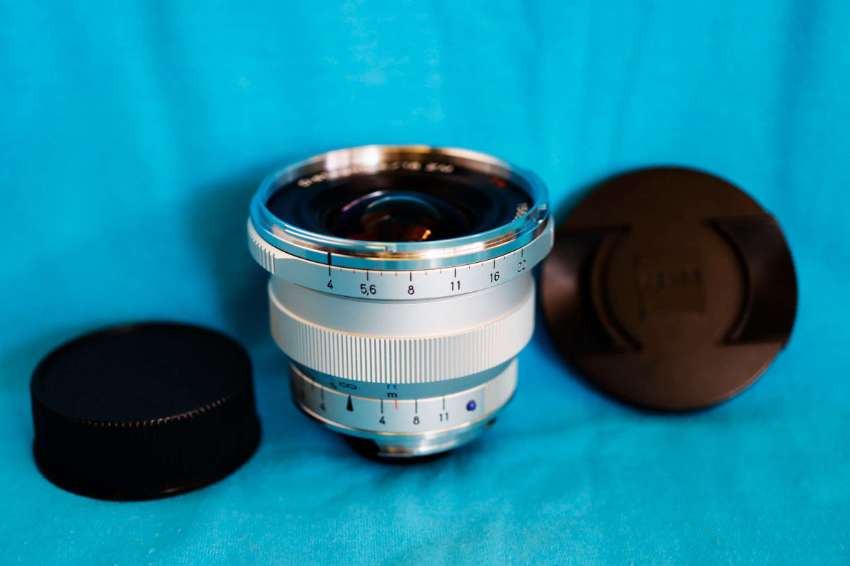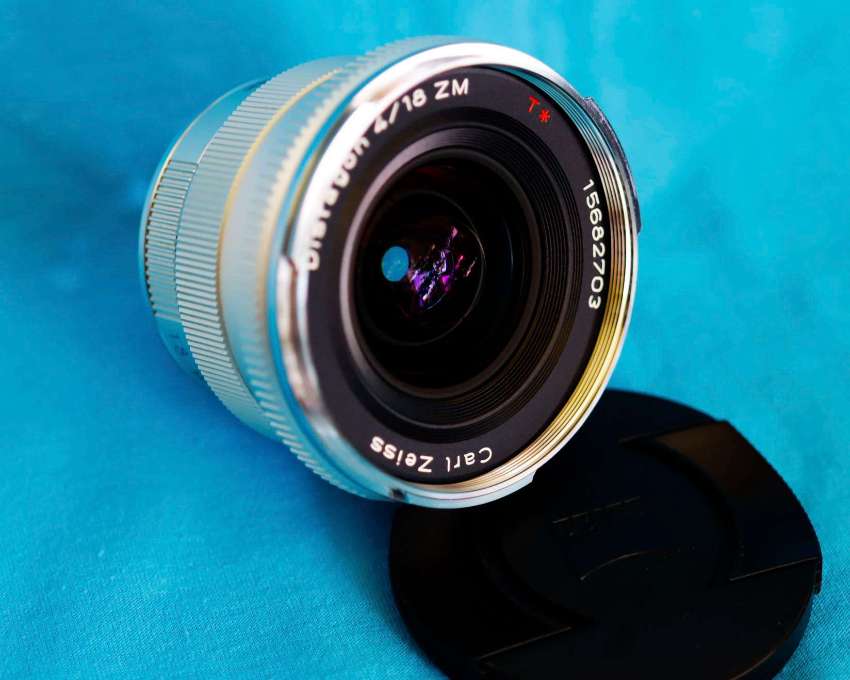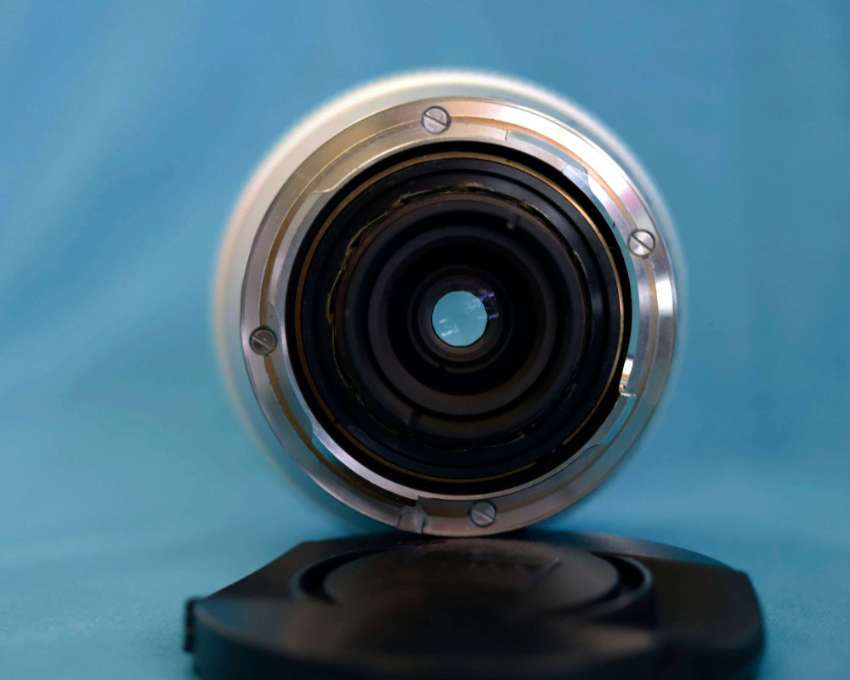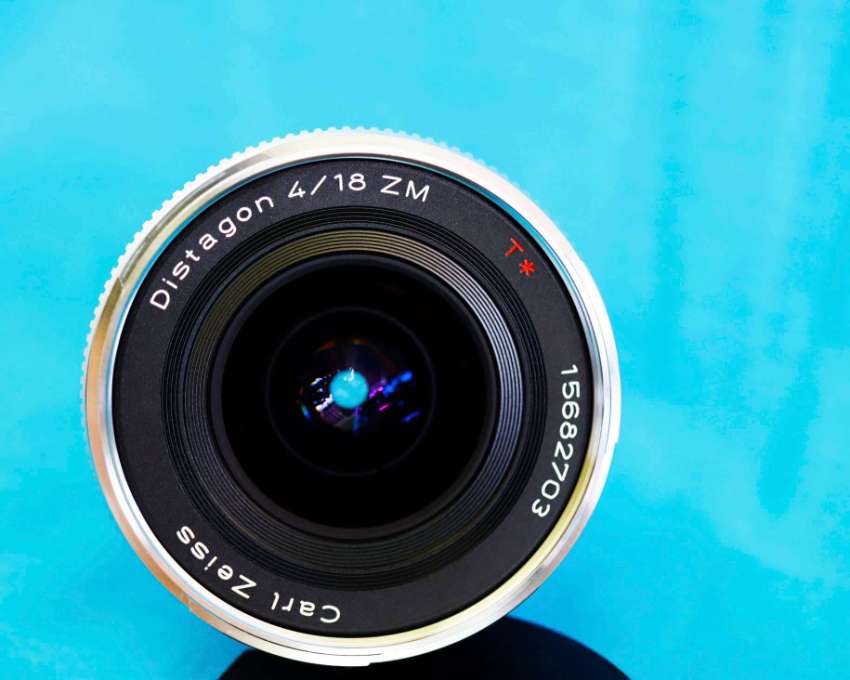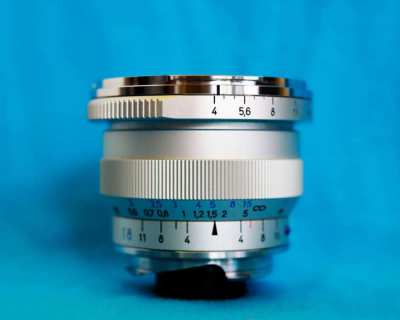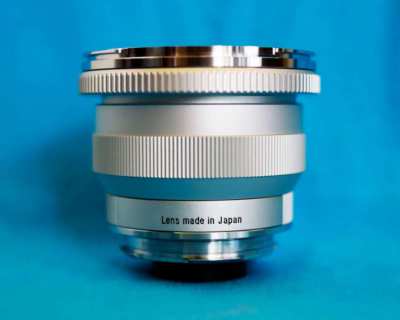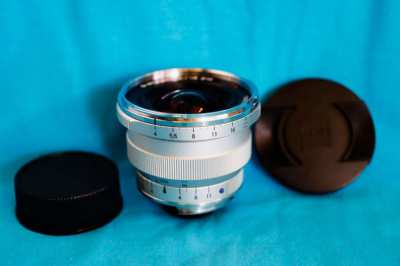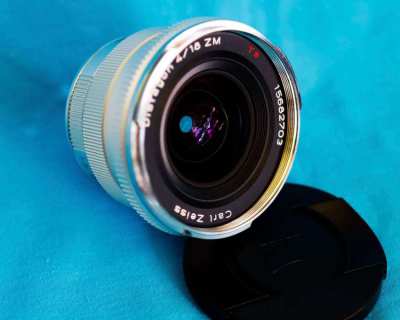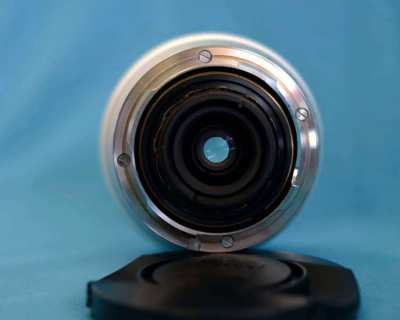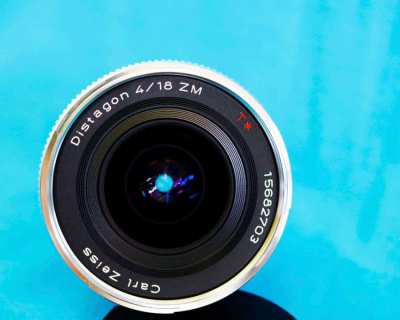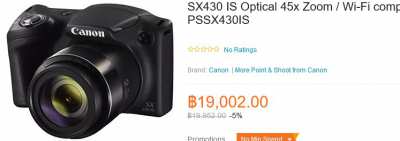Carl Zeiss Distagon T* 18mm f/4 ZM Lens for Leica M-mount, Leica M
- กลางเมืองพัทยา
- 17 Apr 2024 : 14:24 pm
- ไอดี: 468266
รายละเอียดของโฆษณา
Ultra Wide Angle Prime Lens. Made in Japan. Lens with two caps.
S/n: last photo
Fully tested in excellent working condition.
EMS 50 baht, Cash on Delivery Available (COD เก็บเงินปลายทางได้)
or meeting in North Pattaya.
More photos and questions via Line ID: gnnick
https://www.zeiss.com/content/dam/consumer-products/downloads/historical-products/photography/zm-lenses/en/datasheet-zeiss-zm-distagon-418mm-en.pdf
From KenRockwell.com. :
Ideal Uses
Could be the only wide lens you need for your Leica.
Like all Leica M lenses, Zeiss 18mm f/4 ZM works on every Leica M camera, as well as
Minolta CLE
, Voigtländers, Konica Hexar Ms and
Zeiss Ikons.
This Zeiss 18mm lens is perfect for use on any Leica. It's super-sharp, free from distortion and easy to shoot, especially with filters. It comes in silver or black and couples to the rangefinder of every Leica or similar rangefinder camera.
When I finally got one of these in my hands, it's much, much nicer than I had expected.
This Zeiss 18mm's optics are superb, and it takes normal 58mm filters. It's small enough so that there is very little blockage of the image in the 18mm finder, so it's easy to go shoot well.
This Zeiss lens feels great in hand, just like Leica lenses. Focus and aperture rings turn with the same smoothness and precision I expect from Leica, and even better than Leica's cheap new Summarit-M lenses.
By comparison, the new Leica 18mm f/3.8 ASPH
is a dream lost. It's too big for practical use. The Leica 18mm is a poorer choice for photography because you have to use a special
Leica 14 484 filter adapter
to use filters, and then you have to use 77mm filters which will block your viewfinder. You can't compose well when you can't see what you're doing. Why bother?
The
Leica Man
demands the Leica 18mm for his collection, but for actual photographers, the Zeiss 18mm is a better lens because it shoots better.
I still need to have a shoot-out to compare optics; when I've had my hands on the Leica 18mm I wasn't at my optical test range. I'm unsure if the Leica will be as good optically as this Zeiss, but we'll see when I get a sample of the Leica 18mm with which to run a head-to-head shoot-out, hopefully in a few weeks.
The Leica man doesn't trifle the price, and at any price, the Zeiss makes more sense for its superlative optics and superior usability.
Photographers do consider price, and for them, this Zeiss costs less than half of the Leica 18mm.
How does Zeiss make such a great lens so inexpensively? Efficiency. Zeiss puts its brilliance in the design, as Mozart and Beethoven put theirs in their scores, and Zeiss then has the performance (manufacture) done efficiently by Cosina in Japan for these consumer lenses.
While Leica makes nothing optically more exotic than single-user camera lenses, survey equipment, instruments and scopes, Zeiss also makes enterprize-level optics used in cinematography, satellites and computer chip manufacturing. Zeiss Master Prime cine lenses, rented in Hollywood for $300 a day, sell for $20,000 - $25,000 each. The Zeiss lenses used in
ASML steppers
sell for close to seven figures each, and are made in the cleanest clean rooms in Germany.
Leica doesn't even make medium-format lenses, as Zeiss has been doing for Hasselblad since forever.
Whose lenses are used in spy satellites that can read the brand name off a golf ball — from space? Zeiss. What lenses did man take with him to record his most crowning achievement of all, the moon landings? Zeiss.
Zeiss tests every single one of these lenses, including the 18mm ZM reviewed here, for MTF before it's sold to us. The MTF Zeiss specifies are actual tested, typical MTFs from actual lenses, not the pie-in-the-sky computed MTFs that other companies parade around but can't necessarily manufacture.
With Zeiss, we the customers aren't paying for promotional cameras and lenses
given away to celebrities every other month.
Zeiss is unsurpassed, but Zeiss doesn't attract the religious extremists that Leica does to tell you about it.
Zeiss calls this the Zeiss Distagon
T*
4/18 ZM.
"Distagon" is a trademark simply meaning "Zeiss retrofocus wide-angle lens;" it means nothing more specific about the design.
T*
is a brand name for Zeiss' excellent multicoating.
ZM means it fits the eternal M series of Leica rangefinder cameras, as well as the Voigtländer Bessas, Zeiss Ikons and
Minolta CLE
.
Ergonomics are perfect.
The aperture flicks with a fingertip, and the settings are obvious by feel.
Focus flicks with a fingertip, and it's easy to use two fingers for precise focus.
The focus ring feels great. One fingertip is all it takes to flick it.
Focus is very fast and sure. A small twist of the ring leads to a huge movement in the rangefinder. Focus is faster and less precise than Leica's standard.
The focus ring goes from infinity to 0.5 meters in just 100,º which is almost twice as fast as most Leica lenses.
There is no focus tab; just a knurled ring. You can use one or two fingers, unlike with Leica, where you have only the tab for focus
The Zeiss 18 4 is made very well, much better than
Leica's Summarit M lenses
.
Everything is tight, smooth and solid.
Unlike AF lenses, this lens feels like one solid ball of metal. Nothing wiggles, vibrates or clatters.
Filter Threads:
Chromed metal.
Barrel:
Silver anodized aluminum.
Focus Ring:
Anodized aluminum with triangular ribbing.
Focus Tab:
None.
Aperture Ring:
Anodized aluminum.
Focus Helicoids: Brass.
Other Internals:
Metal.
Mount:
Chromed brass.
Mounting Index Dot:
Blue plastic ball.
Markings:
Engraved and filled with paint.
Made in:
Japan.
This Zeiss 18mm f/4 lens is sharp!
It's sharp even at f/4, and even in the far corners of the full 35mm frame.
The half-frame M8's corners are still in the middle of this lens' image.
The only way to make this lens unsharp is to stop down too far, like f/22 if you don't need it, in which case
diffraction
limits performance as it does with every lens.
The 10-bladed diaphragm begets sharp, 10-pointed
sunstars
.
Panoramas, landscapes, architecture, photos with
dominating foreground and wide background,
photography in confined spaces is the profession of
this lens. It offers excellent optical performance in a
100 degree diagonal field angle and its distortion is
almost invisible. Despite its comfortable F4
maximum aperture the photographer will enjoy the
compactness and light weight of the lens. A full
metal barrel, 1/3 f-stops, a sophisticated operating
concept mark it distinctively as a member of the Carl
Zeiss ZM lens family.
This lens still provides an astonishing wide angle
effect even when used with digital rangefinder
cameras.
Because of its wide field angle and the need of an
external viewfinder this lens is ideally combined with
the Zeiss Ikon SW camera body.
A versatile wide-angle prime designed for M-mount rangefinder cameras, the silver
Distagon T* 18mm f/4 ZM Lens
from
ZEISS
provides an immense 98° angle of view to suit photographing wide-open expanses or tight, narrow interior locations with dimensional fidelity. Employing a Distagon optical design, distortion is significantly reduced for a realistic portrayal of scenes and both brightness and sharpness are maintained from edge to edge and three anomalous partial dispersion glass elements are also used to help control chromatic aberrations and color fringing for improved clarity and color fidelity throughout the aperture range. A T* anti-reflective coating has been applied to individual lens elements to control flare and ghosting when working in strong lighting conditions for increased contrast and color neutrality. Additionally, the lens's manual focus design permits working with subjects as close as 1.6' away.
Employing a Distagon optical concept, this lens delivers virtually distortion-free performance that pairs well with the broad angle of view.
Three anomalous partial dispersion elements reduce chromatic aberrations and color fringing for improved color accuracy and clarity.
Zeiss T* anti-reflective coatings have been applied to each lens surface to help minimize reflections in order to provide greater image clarity, contrast, and color fidelity.
Manual focus design enables a minimum focusing distance of 1.6'.
S/n: last photo
Fully tested in excellent working condition.
EMS 50 baht, Cash on Delivery Available (COD เก็บเงินปลายทางได้)
or meeting in North Pattaya.
More photos and questions via Line ID: gnnick
https://www.zeiss.com/content/dam/consumer-products/downloads/historical-products/photography/zm-lenses/en/datasheet-zeiss-zm-distagon-418mm-en.pdf
From KenRockwell.com. :
Ideal Uses
Could be the only wide lens you need for your Leica.
Like all Leica M lenses, Zeiss 18mm f/4 ZM works on every Leica M camera, as well as
Minolta CLE
, Voigtländers, Konica Hexar Ms and
Zeiss Ikons.
This Zeiss 18mm lens is perfect for use on any Leica. It's super-sharp, free from distortion and easy to shoot, especially with filters. It comes in silver or black and couples to the rangefinder of every Leica or similar rangefinder camera.
When I finally got one of these in my hands, it's much, much nicer than I had expected.
This Zeiss 18mm's optics are superb, and it takes normal 58mm filters. It's small enough so that there is very little blockage of the image in the 18mm finder, so it's easy to go shoot well.
This Zeiss lens feels great in hand, just like Leica lenses. Focus and aperture rings turn with the same smoothness and precision I expect from Leica, and even better than Leica's cheap new Summarit-M lenses.
By comparison, the new Leica 18mm f/3.8 ASPH
is a dream lost. It's too big for practical use. The Leica 18mm is a poorer choice for photography because you have to use a special
Leica 14 484 filter adapter
to use filters, and then you have to use 77mm filters which will block your viewfinder. You can't compose well when you can't see what you're doing. Why bother?
The
Leica Man
demands the Leica 18mm for his collection, but for actual photographers, the Zeiss 18mm is a better lens because it shoots better.
I still need to have a shoot-out to compare optics; when I've had my hands on the Leica 18mm I wasn't at my optical test range. I'm unsure if the Leica will be as good optically as this Zeiss, but we'll see when I get a sample of the Leica 18mm with which to run a head-to-head shoot-out, hopefully in a few weeks.
The Leica man doesn't trifle the price, and at any price, the Zeiss makes more sense for its superlative optics and superior usability.
Photographers do consider price, and for them, this Zeiss costs less than half of the Leica 18mm.
How does Zeiss make such a great lens so inexpensively? Efficiency. Zeiss puts its brilliance in the design, as Mozart and Beethoven put theirs in their scores, and Zeiss then has the performance (manufacture) done efficiently by Cosina in Japan for these consumer lenses.
While Leica makes nothing optically more exotic than single-user camera lenses, survey equipment, instruments and scopes, Zeiss also makes enterprize-level optics used in cinematography, satellites and computer chip manufacturing. Zeiss Master Prime cine lenses, rented in Hollywood for $300 a day, sell for $20,000 - $25,000 each. The Zeiss lenses used in
ASML steppers
sell for close to seven figures each, and are made in the cleanest clean rooms in Germany.
Leica doesn't even make medium-format lenses, as Zeiss has been doing for Hasselblad since forever.
Whose lenses are used in spy satellites that can read the brand name off a golf ball — from space? Zeiss. What lenses did man take with him to record his most crowning achievement of all, the moon landings? Zeiss.
Zeiss tests every single one of these lenses, including the 18mm ZM reviewed here, for MTF before it's sold to us. The MTF Zeiss specifies are actual tested, typical MTFs from actual lenses, not the pie-in-the-sky computed MTFs that other companies parade around but can't necessarily manufacture.
With Zeiss, we the customers aren't paying for promotional cameras and lenses
given away to celebrities every other month.
Zeiss is unsurpassed, but Zeiss doesn't attract the religious extremists that Leica does to tell you about it.
Zeiss calls this the Zeiss Distagon
T*
4/18 ZM.
"Distagon" is a trademark simply meaning "Zeiss retrofocus wide-angle lens;" it means nothing more specific about the design.
T*
is a brand name for Zeiss' excellent multicoating.
ZM means it fits the eternal M series of Leica rangefinder cameras, as well as the Voigtländer Bessas, Zeiss Ikons and
Minolta CLE
.
Ergonomics are perfect.
The aperture flicks with a fingertip, and the settings are obvious by feel.
Focus flicks with a fingertip, and it's easy to use two fingers for precise focus.
The focus ring feels great. One fingertip is all it takes to flick it.
Focus is very fast and sure. A small twist of the ring leads to a huge movement in the rangefinder. Focus is faster and less precise than Leica's standard.
The focus ring goes from infinity to 0.5 meters in just 100,º which is almost twice as fast as most Leica lenses.
There is no focus tab; just a knurled ring. You can use one or two fingers, unlike with Leica, where you have only the tab for focus
The Zeiss 18 4 is made very well, much better than
Leica's Summarit M lenses
.
Everything is tight, smooth and solid.
Unlike AF lenses, this lens feels like one solid ball of metal. Nothing wiggles, vibrates or clatters.
Filter Threads:
Chromed metal.
Barrel:
Silver anodized aluminum.
Focus Ring:
Anodized aluminum with triangular ribbing.
Focus Tab:
None.
Aperture Ring:
Anodized aluminum.
Focus Helicoids: Brass.
Other Internals:
Metal.
Mount:
Chromed brass.
Mounting Index Dot:
Blue plastic ball.
Markings:
Engraved and filled with paint.
Made in:
Japan.
This Zeiss 18mm f/4 lens is sharp!
It's sharp even at f/4, and even in the far corners of the full 35mm frame.
The half-frame M8's corners are still in the middle of this lens' image.
The only way to make this lens unsharp is to stop down too far, like f/22 if you don't need it, in which case
diffraction
limits performance as it does with every lens.
The 10-bladed diaphragm begets sharp, 10-pointed
sunstars
.
Panoramas, landscapes, architecture, photos with
dominating foreground and wide background,
photography in confined spaces is the profession of
this lens. It offers excellent optical performance in a
100 degree diagonal field angle and its distortion is
almost invisible. Despite its comfortable F4
maximum aperture the photographer will enjoy the
compactness and light weight of the lens. A full
metal barrel, 1/3 f-stops, a sophisticated operating
concept mark it distinctively as a member of the Carl
Zeiss ZM lens family.
This lens still provides an astonishing wide angle
effect even when used with digital rangefinder
cameras.
Because of its wide field angle and the need of an
external viewfinder this lens is ideally combined with
the Zeiss Ikon SW camera body.
A versatile wide-angle prime designed for M-mount rangefinder cameras, the silver
Distagon T* 18mm f/4 ZM Lens
from
ZEISS
provides an immense 98° angle of view to suit photographing wide-open expanses or tight, narrow interior locations with dimensional fidelity. Employing a Distagon optical design, distortion is significantly reduced for a realistic portrayal of scenes and both brightness and sharpness are maintained from edge to edge and three anomalous partial dispersion glass elements are also used to help control chromatic aberrations and color fringing for improved clarity and color fidelity throughout the aperture range. A T* anti-reflective coating has been applied to individual lens elements to control flare and ghosting when working in strong lighting conditions for increased contrast and color neutrality. Additionally, the lens's manual focus design permits working with subjects as close as 1.6' away.
Employing a Distagon optical concept, this lens delivers virtually distortion-free performance that pairs well with the broad angle of view.
Three anomalous partial dispersion elements reduce chromatic aberrations and color fringing for improved color accuracy and clarity.
Zeiss T* anti-reflective coatings have been applied to each lens surface to help minimize reflections in order to provide greater image clarity, contrast, and color fidelity.
Manual focus design enables a minimum focusing distance of 1.6'.

